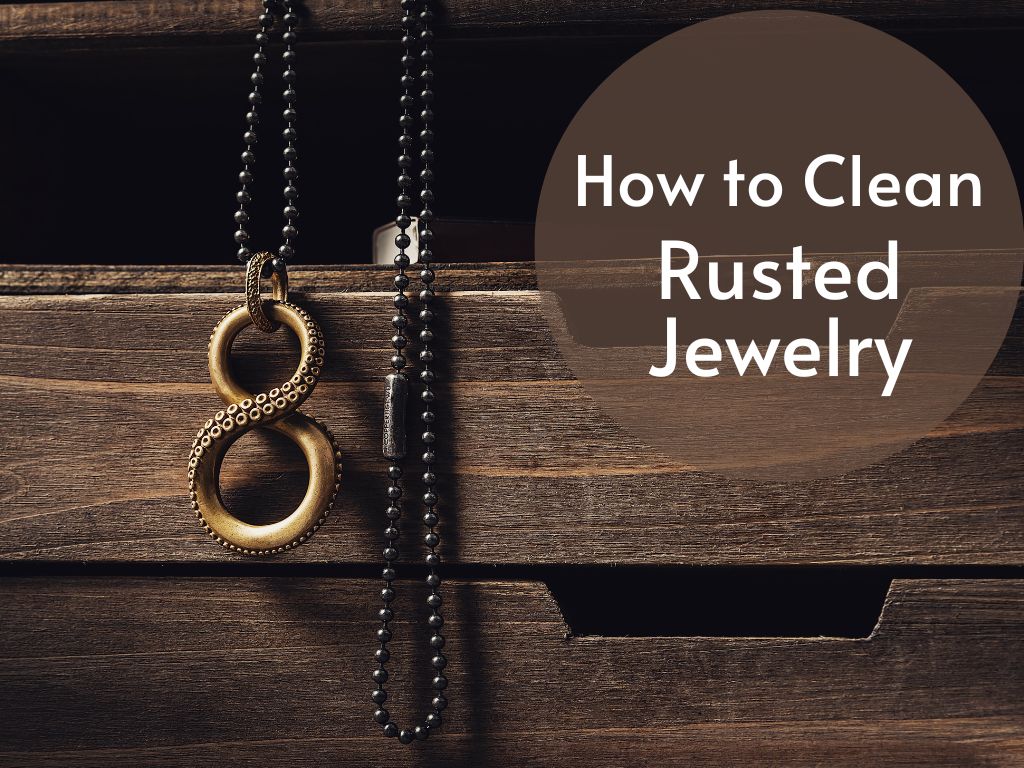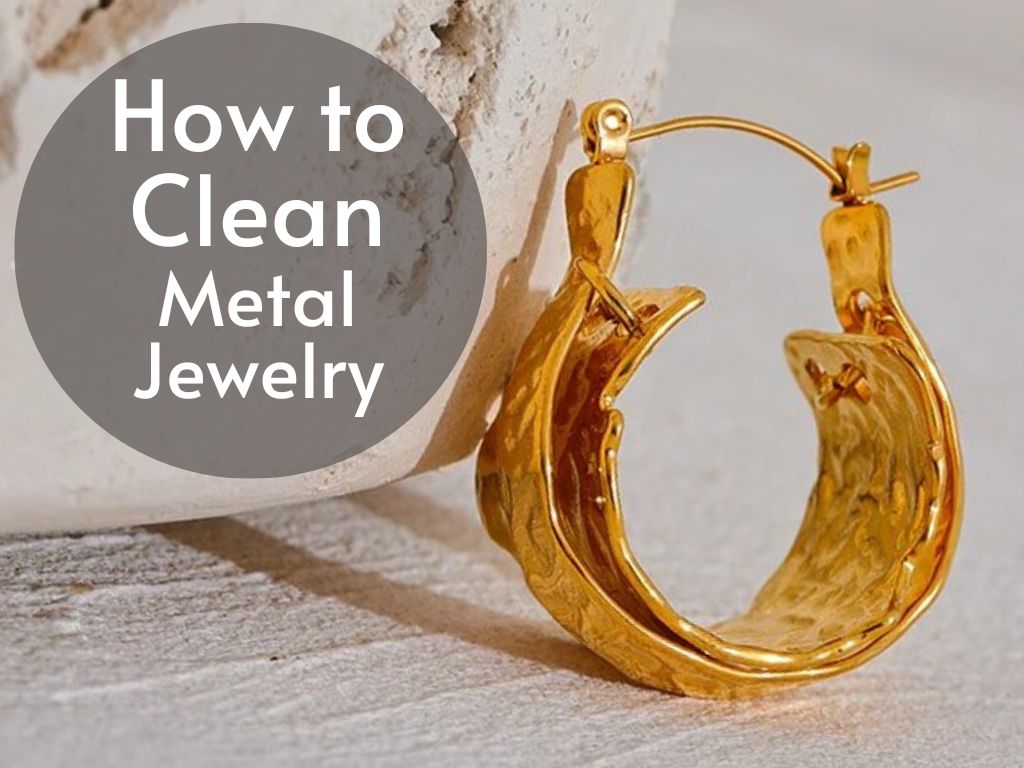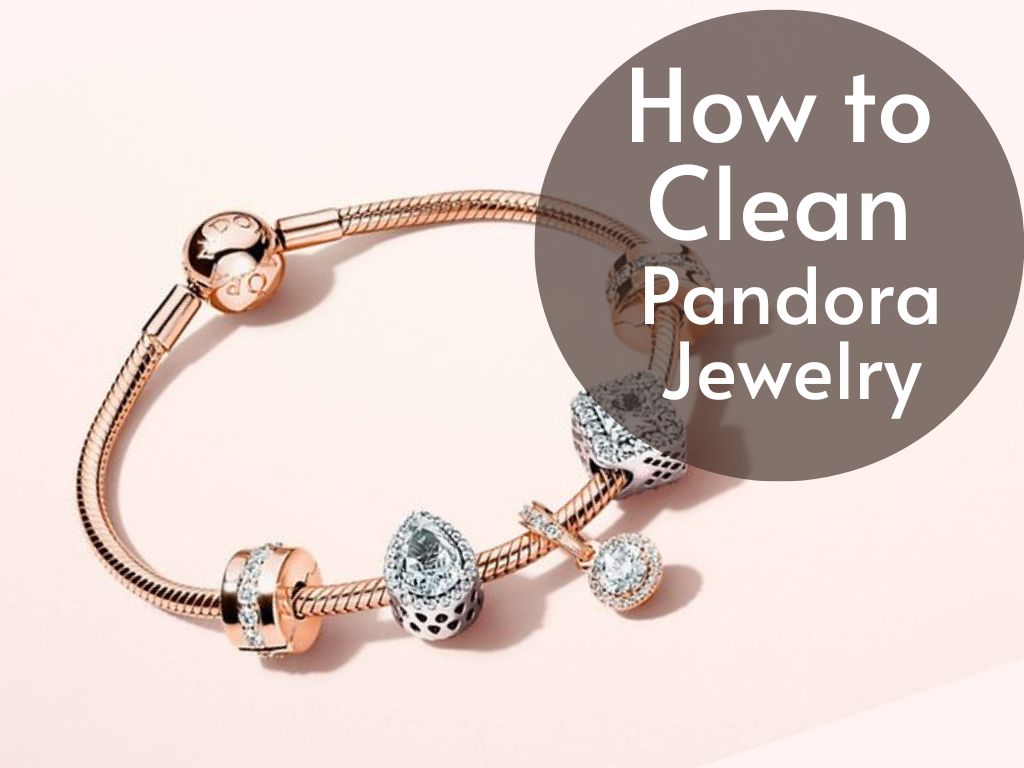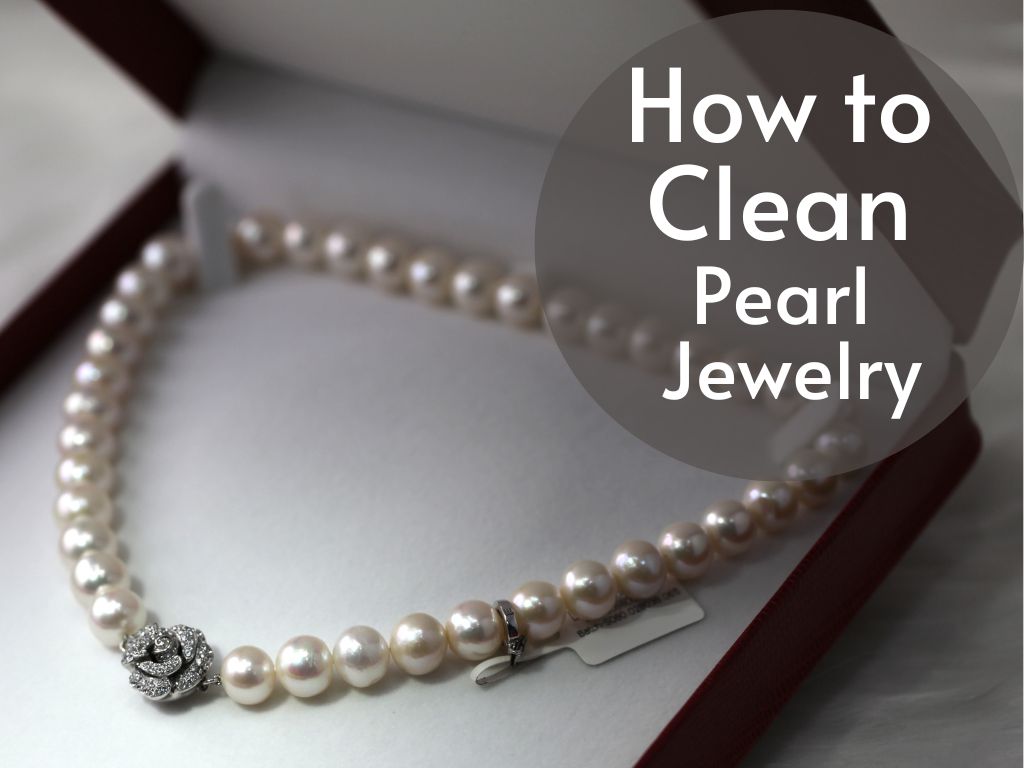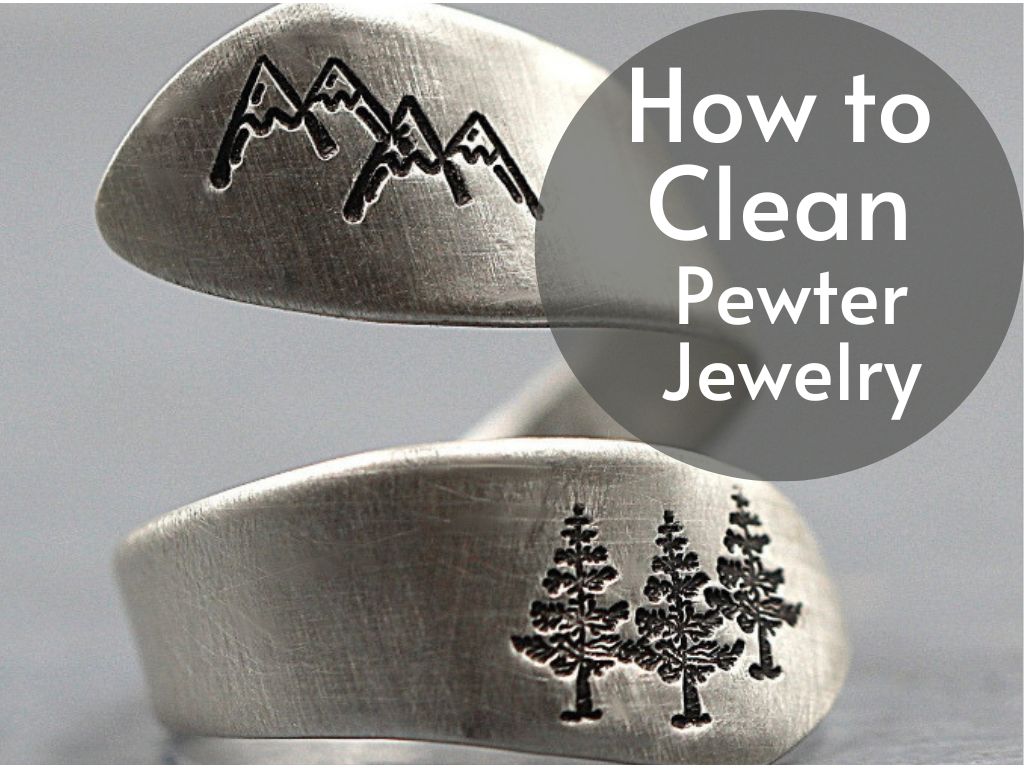Rusted jewelry, with its unsightly appearance and potential damage to precious metals and gemstones, can be a distressing sight for any jewelry lover. However, with the right knowledge and techniques, it is possible to restore the beauty and luster of your beloved jewelry pieces. This article will guide you through the process of cleaning rusted jewelry, offering valuable insights into the importance of regular maintenance and providing an overview of effective cleaning methods.
Importance of Cleaning Rusted Jewelry
The significance of cleaning rusted jewelry cannot be overstated. Rust not only mars the visual appeal of your cherished pieces but can also cause irreversible damage if left untreated. Metals such as silver, gold, and platinum are susceptible to corrosion when exposed to moisture or certain chemicals over time.
The presence of rust indicates oxidation has occurred on the surface, leading to weakened structural integrity. Furthermore, rust can tarnish gemstones and affect their brilliance.
For example, diamonds may appear dull or cloudy when exposed to rusty metal settings. By regularly cleaning your rusted jewelry, you not only restore their aesthetic appeal but also ensure their longevity by preventing further corrosion.
Overview of the Cleaning Process
The process of cleaning rusted jewelry involves a series of steps designed to delicately remove tarnish while preserving the integrity of both metals and gemstones. It begins with gathering essential materials such as a soft-bristled toothbrush or specialized jewelry brush for gentle scrubbing without scratching surfaces.
Mild dish soap or specialized jewelry cleaner will serve as effective cleansers in most cases; however, for stubborn stains or heavy oxidation on certain metals like silver or brass, white vinegar or lemon juice can be used as natural alternatives. Baking soda or toothpaste mixed into a paste-like consistency can act as mild abrasives, aiding in the removal of more stubborn rust stains.
A microfiber cloth or a soft, lint-free cloth is essential for drying and polishing your jewelry after cleaning. It is important to note that while this overview provides a broad perspective on the cleaning process, specific techniques for cleaning different metals and gemstones will be explored in greater detail later in this article.
Understanding Rust
The Science Behind Rust Formation
Rust is a natural chemical reaction known as oxidation that occurs when iron or steel comes into contact with moisture and oxygen. At the heart of this process lies water, which acts as an electrolyte, facilitating the movement of ions between metal atoms.
When iron reacts with oxygen in the presence of water, it creates a new compound called iron oxide, commonly known as rust. This process is accelerated by increased humidity or exposure to saltwater.
Common Causes of Rust on Jewelry
Jewelry often falls victim to rust due to various factors. One primary cause is improper care and maintenance. When jewelry is not properly stored or cleaned regularly, it becomes susceptible to moisture accumulation over time, leading to rust formation.
Exposure to harsh chemicals like chlorine (found in swimming pools) or household cleaning agents can also accelerate rusting processes. Another significant factor contributing to rusted jewelry is environmental conditions.
Living in coastal areas where saltwater and high humidity levels prevail increases the chances of metal jewelry corroding and developing rust. Furthermore, wearing jewelry while participating in activities involving excessive sweating or exposing it directly to water without proper drying can promote rust formation.
It’s crucial for jewelry enthusiasts to understand the underlying science behind rust formation and be aware of the common causes that lead to its occurrence on their precious pieces. By comprehending these factors, individuals can take proactive measures in preventing and addressing any existing rust issues effectively.
Gathering necessary materials and tools
Before embarking on the task of cleaning rusted jewelry, it is essential to gather all the necessary materials and tools. Having the right supplies at hand will ensure a smooth and effective cleaning process.
Here are some key items you should include in your arsenal:
- Soft-bristled toothbrush or jewelry brush: This is a vital tool for removing rust from jewelry without causing any damage. The soft bristles help dislodge dirt and grime gently, making it ideal for delicate pieces.
- Mild dish soap or specialized jewelry cleaner: These cleaning agents are gentle yet effective in breaking down oils, dirt, and tarnish that contribute to rust formation. Look for mild formulas that do not contain harsh chemicals that may harm your precious pieces.
- White vinegar or lemon juice: Both white vinegar and lemon juice act as natural acid-based cleaners, which can be particularly useful for tackling stubborn rust stains. They work by loosening the oxidation on metal surfaces.
- Baking soda or toothpaste (optional): Baking soda and toothpaste can provide an extra boost in removing tough stains from metals like silver. These mild abrasives help lift stubborn residue while being gentle enough not to damage the surface of your jewelry.
- Microfiber cloth or soft, lint-free cloth: Having a soft cloth on hand is crucial for drying and polishing your jewelry after cleaning. Microfiber cloths are highly recommended as they are non-abrasive and won’t leave behind lint or scratches.
Gathering these essential materials ensures that you have everything needed to effectively clean your rusted jewelry without causing any harm. Remember, using the appropriate tools and cleaning agents helps preserve the shine and longevity of your precious pieces.
Gold Jewelry
Soaking in Warm Soapy Water
One of the gentlest and safest methods to clean gold jewelry is by soaking it in warm soapy water. Begin by filling a small bowl with lukewarm water and adding a few drops of mild dish soap to create a soapy solution. Gently place your gold jewelry into the bowl, ensuring it is fully submerged.
Allow the jewelry to soak for approximately 10-15 minutes, allowing the soapy solution to work its way into any crevices or hard-to-reach areas where dirt and grime may have accumulated. After soaking, carefully remove the jewelry from the water and rinse it thoroughly under running water.
Gently Brushing with a Toothbrush
After soaking, use a soft-bristled toothbrush or a specialized jewelry brush to gently scrub away any remaining dirt or residue on your gold jewelry. Take care not to apply excessive pressure as this might scratch or damage delicate pieces.
Hold your jewelry firmly but gently between your fingertips, then using small circular motions, brush all sides of the piece including intricate detailing and hard-to-reach areas. Pay special attention to any visible stains or tarnish spots while brushing.
Removing Stubborn Stains with Baking Soda Paste
For more stubborn stains that are resistant to simple soaking and brushing, you can make a baking soda paste for an extra cleaning boost. Mix equal parts baking soda and water until you achieve a thick consistency similar to toothpaste.
Apply this paste onto your gold jewelry using a soft cloth or sponge, ensuring you cover all affected areas. Allow the paste to sit on the jewelry for about 30 minutes before rinsing it off with warm water and gently patting dry with a clean cloth.
Silver Jewelry
Cleaning with a Silver Polishing Cloth
Silver jewelry tends to tarnish over time due to exposure to air and moisture. To restore its shine, use a silver polishing cloth specifically designed for cleaning silver. Take the cloth and gently rub it over the surface of your silver jewelry using back-and-forth motions.
Pay close attention to any tarnished areas or stubborn stains while polishing. The cloth’s special properties will help remove tarnish and restore the lustrous finish of your silver jewelry.
Soaking in Vinegar Solution
If your silver jewelry shows signs of heavy tarnish, you can try using a vinegar solution for a deeper clean. In a small bowl, mix equal parts white vinegar and warm water. Place your silver jewelry in this solution, ensuring it is fully submerged, and let it soak for approximately 30 minutes.
Vinegar’s acidic properties help break down the tarnish on the surface of the metal. After soaking, remove the jewelry from the solution and rinse thoroughly under running water to remove any residual vinegar.
Removing Tarnish with Baking Soda and Aluminum Foil Method
Another effective technique for removing tarnish from silver is by using a combination of baking soda and aluminum foil. Line a small container with aluminum foil making sure that it covers all sides.
Fill this container with warm water and add two tablespoons of baking soda, stirring until dissolved. Submerge your silver jewelry into this mixture ensuring that it touches the foil-lined container surface; ensure each piece is fully covered by water.
Allow the pieces to sit in this solution for around 10-15 minutes while observing as the chemical reaction between aluminum foil, baking soda, and tarnish occurs – you may notice some fizzing action indicating that tarnish is being lifted off. Carefully remove your jewelry from the solution after time has elapsed and rinse well under running water before drying with a soft cloth.
Platinum Jewelry
Cleaning Using Mild Dish Soap and Warm Water
Platinum jewelry can be safely cleaned using a mild dish soap and warm water solution. Fill a small bowl with warm water and add a few drops of gentle dish soap, creating a soapy mixture. Place your platinum jewelry into the bowl, ensuring it is fully submerged.
Allow it to soak for approximately 10-15 minutes to loosen any dirt or residue. After soaking, use a soft brush, like a toothbrush or jewelry brush, to gently scrub away any remaining debris.
Pay attention to intricate details and difficult-to-reach areas while brushing. Rinse the jewelry under running water to remove all traces of soap, then gently pat dry with a clean cloth.
Gemstone Jewelry
Specific Cleaning Methods for Popular Gemstones
Different gemstones require specific cleaning methods to maintain their brilliance without causing damage. Here are some tailored approaches for popular gemstones:
– Diamonds: Soak diamond jewelry in a mixture of warm water and mild dish soap, then gently scrub with a soft-bristled toothbrush before rinsing. – Emeralds: Clean emerald jewelry using lukewarm soapy water and a soft cloth; avoid harsh chemicals as they can damage the stone.
– Rubies: Soak ruby jewelry in warm soapy water, scrub gently with a soft brush, rinse thoroughly, and pat dry. – Sapphires: Clean sapphire pieces by soaking them in warm soapy water and scrubbing lightly with a soft brush; rinse well afterward.
Remember to always consult specific cleaning guidelines for your particular gemstone as some may require additional precautions or specialized techniques. By following these cleaning methods tailored to various metals and gemstones, you can effectively restore the beauty of your rusted jewelry while minimizing the risk of damage or discoloration.
Special Cases: Delicate and Vintage Jewelry
Handling delicate pieces with care
When it comes to delicate jewelry pieces, such as antique or heirloom items, extra caution is required during the cleaning process. Delicate jewelry often features intricate designs, fragile gemstones, or intricate filigree work that can easily get damaged if not handled properly. To ensure the preservation of these precious pieces while cleaning rust, follow these guidelines:
1. Use a soft-bristled toothbrush: Opt for a toothbrush with soft bristles to minimize the risk of scratching or damaging the delicate surfaces of your jewelry. Gently brush away any rust or dirt using light strokes.
2. Be mindful of gemstones: If your delicate jewelry includes gemstones, take care not to expose them to abrasive materials or excessive moisture. Some gemstones are sensitive to chemicals and can get damaged easily.
You may want to consult a professional jeweler for specific cleaning recommendations based on the type of gemstone in your piece. 3. Avoid excessive force: It’s crucial not to apply too much pressure when cleaning delicate jewelry.
Excessive force can cause fragile components like clasps or chains to break or bend out of shape. Instead, focus on gentle brushing and soaking methods that allow rust removal without jeopardizing the structural integrity of your precious piece.
Consulting professionals for valuable vintage pieces
Vintage jewelry holds significant historical and sentimental value, making it even more crucial to seek professional advice when it comes to cleaning and maintenance. Here are some reasons why consulting a professional jeweler is highly recommended:
1. Expertise in handling vintage materials: Vintage pieces often incorporate unique materials and techniques that require specialized knowledge for safe cleaning practices. Professionals will possess the expertise needed to identify specific metals, gemstones, and intricate details characteristic of certain eras.
2. Preservation of value: Vintage jewelry can be a valuable investment, and improper cleaning methods can significantly diminish its worth. Consulting a professional ensures that the appropriate techniques are used to maintain the piece’s integrity and value.
3. Restoration services: If your vintage jewelry requires extensive rust removal or intricate repairs, professionals have access to advanced restoration techniques. They can offer specialized services to bring your cherished piece back to its original glory while minimizing any risk of damage.
Remember, professional jewelers have the experience and resources necessary to handle delicate or valuable vintage pieces with the utmost care. Seeking their guidance will help ensure that your treasured jewelry remains in pristine condition for years to come.
Preventive Measures to Avoid Future Rusting
Proper storage techniques
When it comes to preserving the beauty and longevity of your jewelry, proper storage is key. One of the primary causes of rust on jewelry is exposure to moisture and air.
Therefore, investing in airtight containers or small zip-lock bags can significantly reduce the chances of rust formation. These containers create a barrier that helps prevent moisture from reaching your precious pieces.
Additionally, consider adding silica gel packets or anti-tarnish strips inside the storage container to absorb any residual moisture and inhibit oxidation. Furthermore, it is crucial to store each piece separately within your jewelry box or container to avoid scratches and tangling.
Utilize soft fabric pouches or individual compartments with dividers to keep different items from coming into contact and potentially causing damage. By taking these simple yet effective steps in storing your jewelry, you can ensure their protection against rust formation.
Avoiding exposure to moisture and chemicals
Moisture acts as a catalyst for rust formation on metal surfaces, so it is essential to minimize your jewelry’s exposure to water whenever possible. Make it a habit to remove all jewelry before engaging in activities such as swimming, showering, or washing dishes.
Furthermore, apply lotions, perfumes, and other cosmetics before putting on your jewelry as these products often contain chemicals that can accelerate tarnishing and rusting processes. It is also crucial to be mindful of the environment in which you store your jewelry.
Avoid storing pieces in areas prone to high humidity levels such as bathrooms or basements since these environments promote moisture accumulation. Similarly, keep your jewelry away from direct sunlight as prolonged exposure can cause discoloration or fading of gemstones.
Taking proactive measures such as avoiding unnecessary contact with harsh chemicals like household cleaners or chlorine-based solutions will help maintain the integrity of your jewelry over time. By being conscious of these factors and making small adjustments to your daily routine, you can significantly reduce the risk of rust formation and ensure the long-lasting beauty of your jewelry collection.
Conclusion
Proper storage techniques and minimizing exposure to moisture and chemicals are vital preventive measures to avoid future rusting of your precious jewelry. By implementing these practices, you can protect your beloved pieces from oxidation, tarnish, and potential damage.
Remember to store each piece separately in airtight containers or individual pouches with anti-tarnish strips or silica gel packets. Avoid exposing your jewelry to water, excessive humidity, direct sunlight, and harsh chemicals.
Taking these simple yet effective steps will contribute to the longevity of your jewelry’s shine and luster. By maintaining a regular cleaning routine and practicing preventive measures, you can enjoy your treasured jewelry for years to come without worrying about unsightly rust formations.
Conclusion
Summarizing the Importance of Regular Jewelry Maintenance
Jewelry is not just a fashionable accessory; it often holds sentimental value and represents cherished memories. Regular maintenance is crucial to preserve the beauty and longevity of your jewelry. By neglecting proper care, rust and tarnish can gradually erode its shine, compromise structural integrity, and even lead to irreversible damage.
Therefore, understanding how to clean rusted jewelry is essential for every jewelry owner. Throughout this article, we have explored various cleaning methods for different metals and gemstones.
From gold to silver, platinum to delicate vintage pieces – each type requires specific care tailored to its unique characteristics. By following these methods diligently, you can restore the luster of your rusted jewelry and prevent future deterioration. Encouraging Commitment to Jewelry Care
While it may seem like a tedious task, investing time in maintaining your jewelry will undoubtedly pay off in the long run. The effort put into cleaning and preserving your beloved pieces will ensure they remain as stunning as ever for years to come. Moreover, regularly inspecting your jewelry allows you to identify potential issues early on, preventing expensive repairs or loss of sentimental items.
Remember that taking care of your jewelry goes beyond just cleaning it periodically; proper storage plays a vital role as well. Consider using individual cloth pouches or compartments within a jewelry box to prevent scratches or tangling.
Additionally, be cautious when exposing your precious pieces to moisture or harsh chemicals that could accelerate rust formation. By incorporating regular maintenance practices into your routine and following the appropriate cleaning methods outlined throughout this article, you can keep your treasured jewelry looking exquisite and radiant for generations.
Your commitment demonstrates not only an appreciation for their beauty but also an understanding of their emotional significance. Embrace the joy that comes with wearing well-maintained jewels that evoke admiration from others while reminding you of the cherished memories they hold.

